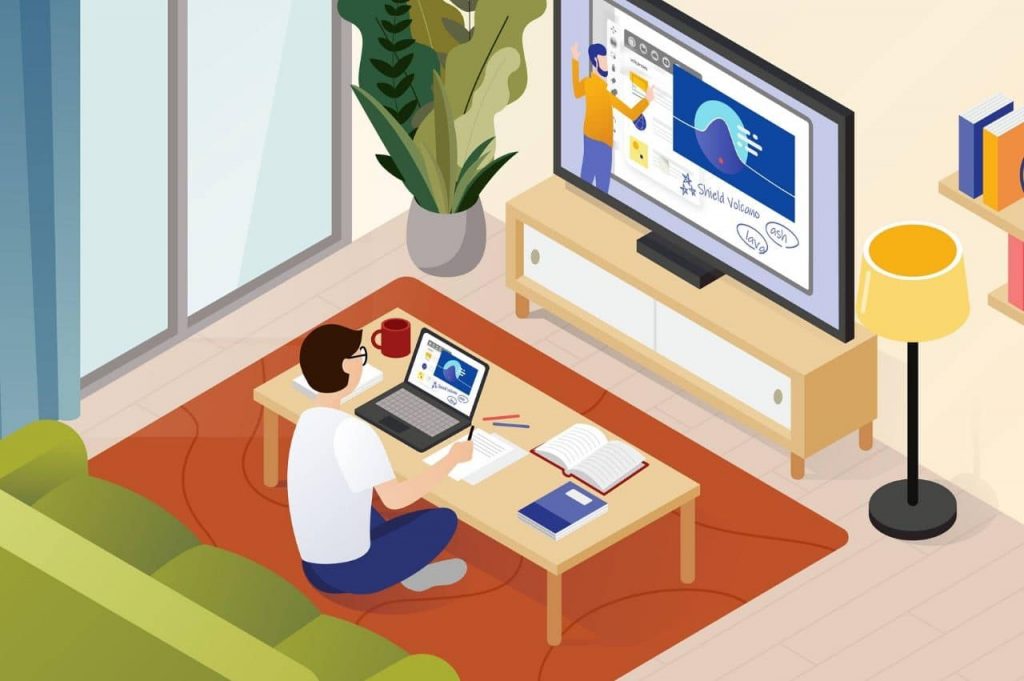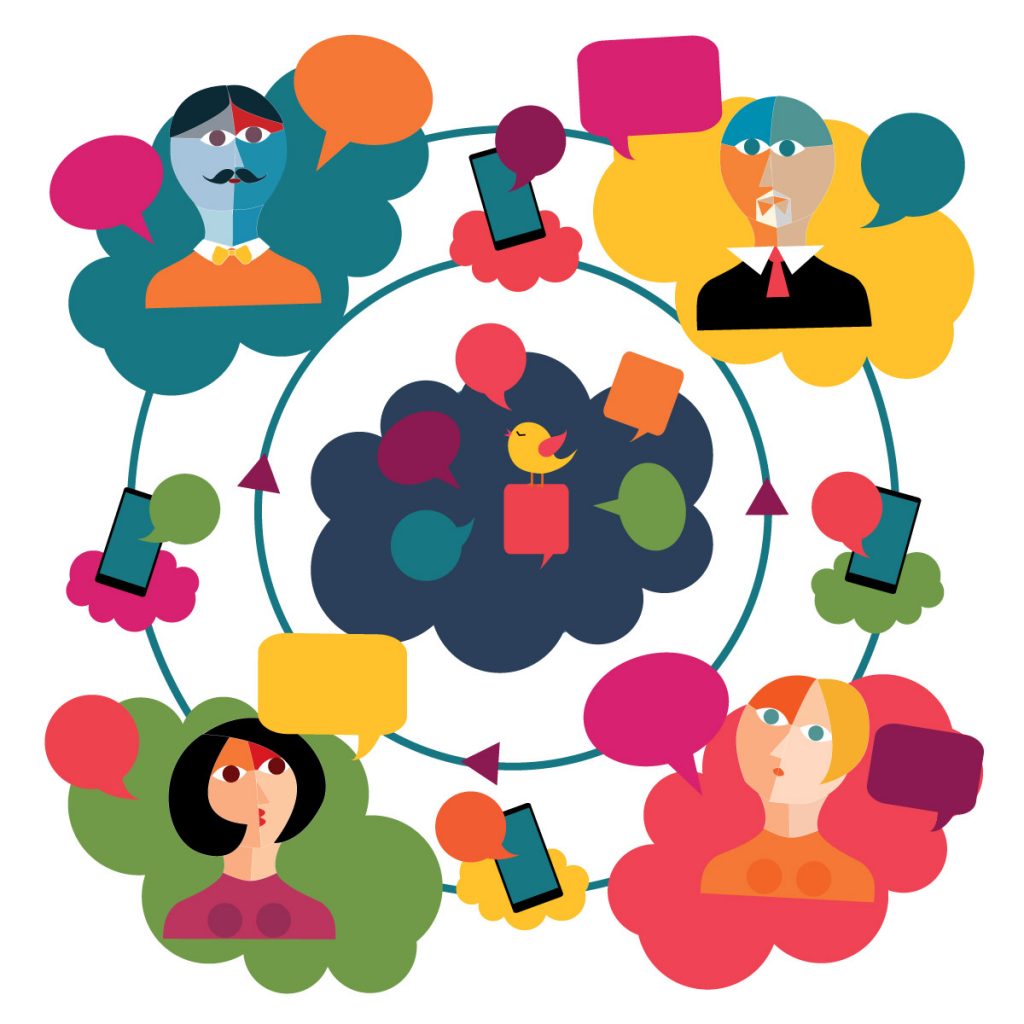
Modern students live in a dynamic world, should perform many challenging tasks at once, undertake an enormous workload, seek to organize an educational process in the most convenient and reasonable way. Many of them also strive to pay due attention to family affairs and labor responsibilities. It is impossible to cope with all these things if one does not know how to operate information effectively.
Technology has become an indispensable part of human life. In particular, this relates to education. The experts from online coursework writing service Pro-Papers consider the ways how electronic devices and the Internet benefits students.
Table of Contents
Accessibility of learning resources
It was rather hard for our moms and dads to find the information they needed to prepare a worthy academic project. They had to spend long evenings in libraries, read textbooks and encyclopedias, rewrite information found by hand, wait for a professor near one’s cabinet to get a consultation. Today’s students can avoid all these inconveniences, use smart devices to find, download, and process data. Responsive touchscreen interfaces literally predict their wishes, become real friends and educational assistants.
When preparing an academic project, a student may enter a query in a search engine and find relevant materials on a topic, watch educational films. Also, there are many entertaining applications that make learning fun and exciting. Visit uteach.io
If a student has no time or opportunity to do homework, it is always possible to find a specialized online service and ask an expert to “do my paper”. A ready assignment may be received by e-mail.
Distant learning

img source: viewsonic.com
Many people dream of getting a diploma from a foreign university. But not all of them are ready to leave their home town, start living in a dorm far from family and old friends, let drastic changes in their lives. But a good trend is observed today. The leading universities increasingly offer distant educational programs. Students may learn right at home, sitting in front of a computer, receive textbooks and manuals, submit assignments, and pass exams online. There is no need to sacrifice money and comfort to embody the dream.
It may first seem that distant learning is emotionless and a person cannot gain profound knowledge interacting only with a cold machine. But it is worth not forgetting that students communicate with live professors. They may participate in video conferences, perform assignments together in real-time mode.
It is always better if a person elaborates on new material in a calm, cozy home atmosphere. It is rather hard to concentrate in a classroom if one is constantly distracted by other students. In addition, some young people can’t stand waking up early in the morning and spending 1 hour on public transport. If one has remote access to knowledge, all these inconveniences stay behind. Time saved may be devoted to a healthy sleep or morning exercises.
Individualized education

img source: vectorstock.com
A possibility to adjust an individual learning schedule is very important. For example, if a person juggles work with education, one has no possibility to learn in the morning. It is much more convenient for one to read lectures and watch educational videos in the evening or on weekends when one should not sacrifice other activities.
Also, people perceive information differently: through reading, listening, communicating, observing vivid images, taking notes, drawing schemes. With modern technologies, each person can find a suitable learning style and make the most of the academic activities.
Easier calculations and modeling
Such programs as Excel having an extensive set of useful formulas turn out to be very helpful when one needs to conduct complex calculations. Students compile large tables and just change variables to check a result for new input data. There is no need to work with each formula again.
Also, there are many useful programs helping to prepare drawings and 3D layouts. They are of particular use to engineers, architects who can perform large-scale projects only theoretically, without significant financial spending. Virtual modeling even helps to save human lives. For example, the work of doctors and jet pilots is way too dangerous to experiment in real conditions.
Virtual communication

img source: mit.edu
Each student knows that it is much easier to perform tricky assignments jointly with groupmates. Even when doing homework at home, young people can communicate with each other on the Internet. If a person cannot perform a task on physics, one may just ask a friend “do my paper”. When a friend will have problems with a literature essay, the first student also can lend a helping hand.
Such teamwork is on because there are not many excellent students able to cope with all disciplines equally well. But they may overcome the most difficult obstacles by working together. This skill will be of great use at work and in everyday life.
Impressive presenting academic projects
Impressive presenting academic projects is an essential skill that elevates the understanding and communication of scholarly research. As a rule, after writing a dissertation or a research paper, students have to pass a public defense in front of several processes. This moment is critical as it allows for the synthesis of hard work, and it is also a formal evaluation of one’s comprehension and mastery of the subject matter. Listeners feel boredom when a speaker just reads a report with the main points. This traditional method often lacks engagement, personal connection, and dynamic expression, leading to a passive reception from the audience.
But one’s performance may become much more vivid and memorable if using a PowerPoint presentation with images, tables, and animation effects. This strategy can create a transformative experience for both the presenter and the audience. It helps to summarize the results of long, complex work and present them in an interesting, easy-to-perceive form.
By including visual aids such as graphs, charts, and relevant illustrations, a presenter can appeal to various learning styles, making the content more accessible to a wider range of audience members. The use of animation effects can guide the audience’s attention and highlight critical aspects of the research, providing a clearer understanding of complex relationships, methodologies, and findings.
Utilizing multimedia tools like PowerPoint doesn’t merely add flair to a presentation; it serves a deeper educational purpose. It fosters better retention of the material, allowing the audience to connect the verbal explanation with visual representation. Such presentations can break down highly technical or complicated subjects into digestible pieces, making them more relatable and engaging. By employing visual aids effectively, one can create a connection between theoretical concepts and real-world applications, thereby enhancing the overall comprehension of the material.
Furthermore, a well-structured and visually appealing presentation can boost the presenter’s confidence, enhancing their delivery and engagement with the audience. Preparation and practice with these tools can lead to a more refined and polished presentation, reflecting not only the quality of the research but also the presenter’s commitment to excellence. Attention to detail, creativity in design, and thoughtful integration of multimedia elements all contribute to a more compelling and impactful presentation.
In the modern academic environment, where the competition for attention and understanding is intense, mastering the art of effective presentation has become an indispensable skill. From students defending their dissertations to professionals sharing their research findings at conferences, the ability to communicate complex ideas clearly and engagingly is paramount. Tools like PowerPoint, when used thoughtfully and creatively, can transform a dry, monotonous recitation of facts into a lively, interactive, and memorable experience.
The potential for enhanced communication, broader reach, and deeper connection makes investing in impressive presenting academic projects not just an option but a vital necessity. For additional info about this, particularly if you think it can help you, learn more here.
E-books

img source: goodereader.com
It is not convenient for students to carry heavy textbooks and notebooks in a backpack. In addition, not all textbooks may be found in a library. Educational literature is not cheap today, so young people have to spend fairly large sums of money to prepare for each new semester. E-books which may be read in any tablet or laptop became a great alternative.
A student may highlight a particularly important text with color when listening to a lecture. In the case of a traditional book, such highlighting would be perceived as vandalism while an electronic copy may be used on student’s discretion.
However, professors treat e-books with distrust. The thing is that young people often try to cheat on exams. It is much easier to hide a smartphone than a textbook.
Preparing for adult life
When passing an interview at any company, graduates are sure to be asked about their computer skills. If a university does not provide young people with modern problem-solving methods, they will have to master these methods all alone, spend additional time and efforts to understand how to use office programs, elementary graphics editors, prepare reports, communicate with clients and business partners by e-mail, perform professional duties quickly and effectively.
That is why acquaintance with technology is not only a prerequisite for successful learning but also a precondition for rapid career growth.







